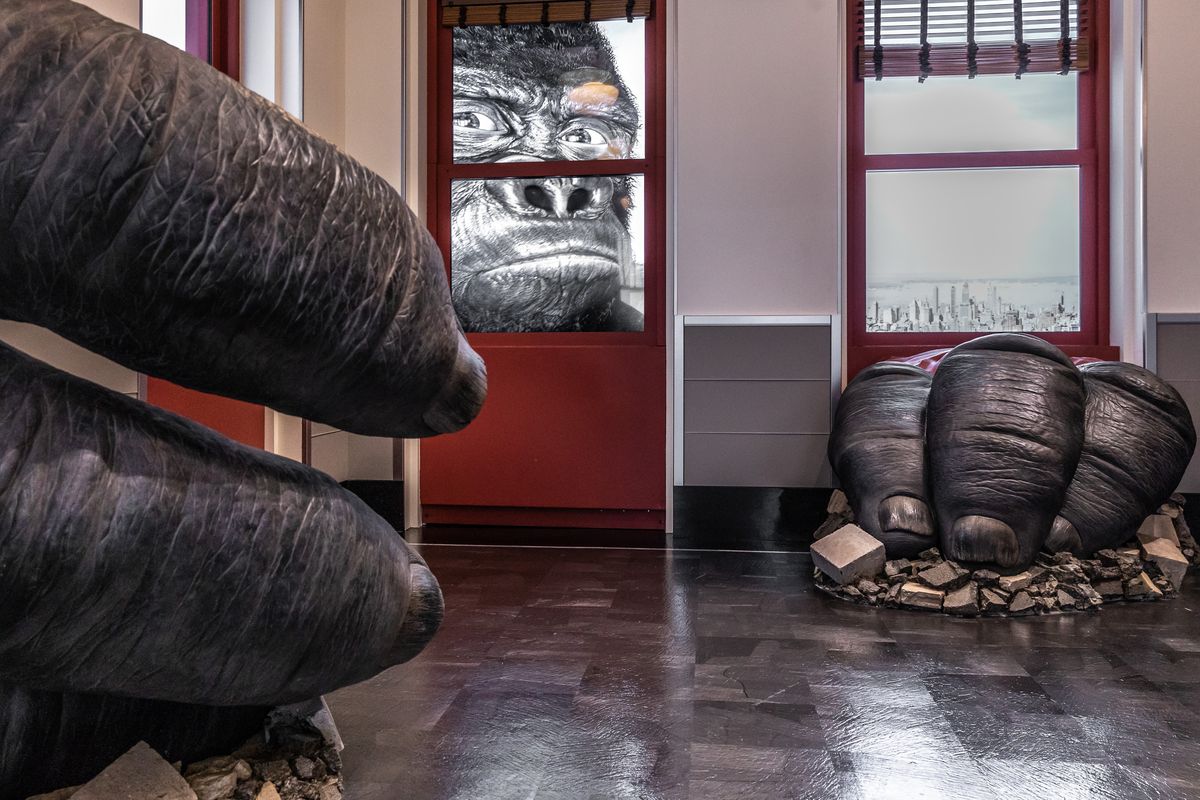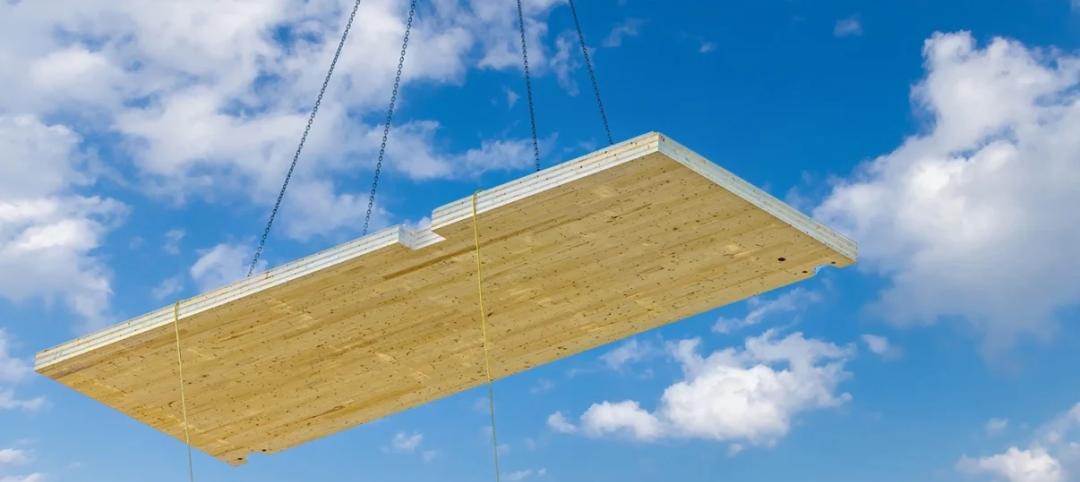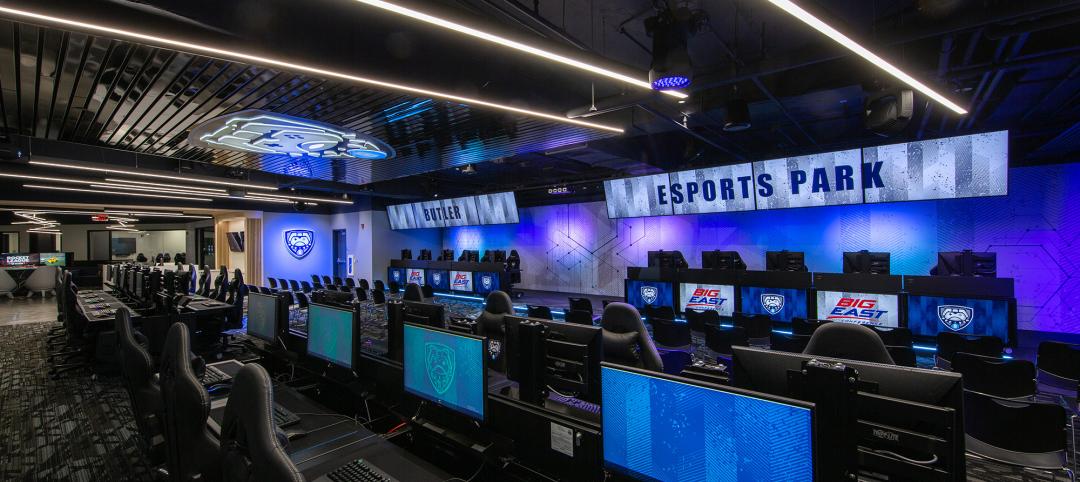This morning, a $165 million, 10,000-sf museum opened on the second floor of the Empire State Building in New York City, completing the second of a four-phase “reimagining” of that building’s Observatory experience, which draws four million visitors annually.
The first phase, which relocated the Observatory’s entrance from Fifth Avenue to 20 West 34th Street, was finished last August and includes a newly designed lobby. Phase three, the reconstruction of the building’s glassed-in 102nd-floor observation deck, should be done by September. Phase four, a renovation of the 80th-floor exhibit space, is being done in partnership with NYC & Company. Its exhibits will encourage visitors to create personalized trip itineraries from the top of the Empire State Building, and abet their choices with recommendations in all five boroughs. Phase four is scheduled for completion in November.
The second-floor museum, open from 8 a.m. to 2 a.m. daily, is a solution to a problem of long queues of visitors waiting for elevators en route to observatories on the 86th and 102nd floors. “They told us that they loved the Observatory, but hated the lines,” says Jean-Yves Ghazi, President of the Empire State Realty Trust, which owns and manages the Empire State Building, and has been working on this renovation for 4½ years. “What we set out to do is to extend the ‘emotional connection’ [of the observatory] for the visitors.”
Tom Hennes, a Principal with Thinc Design, the project’s lead designer, adds that the museum “focuses on the building itself” to provide a “deeper engagement” for visitors.
BD+C walked through the museum the Saturday before it opened.
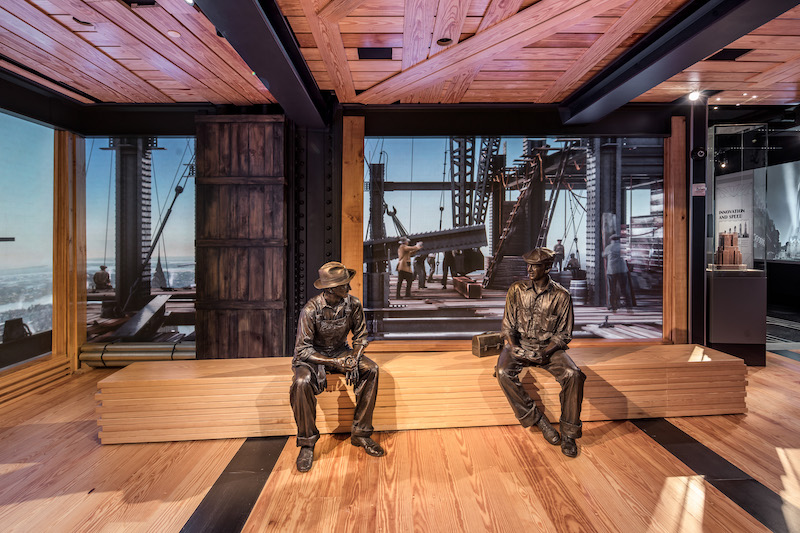 Four bronze statues of iron workers and masons are placed in the middle of “Construction,” one of 10 galleries in the museum that recounts the history of the Empire State Building. Thirty actors were used to create video that reenacted the building of the tower.
Four bronze statues of iron workers and masons are placed in the middle of “Construction,” one of 10 galleries in the museum that recounts the history of the Empire State Building. Thirty actors were used to create video that reenacted the building of the tower.
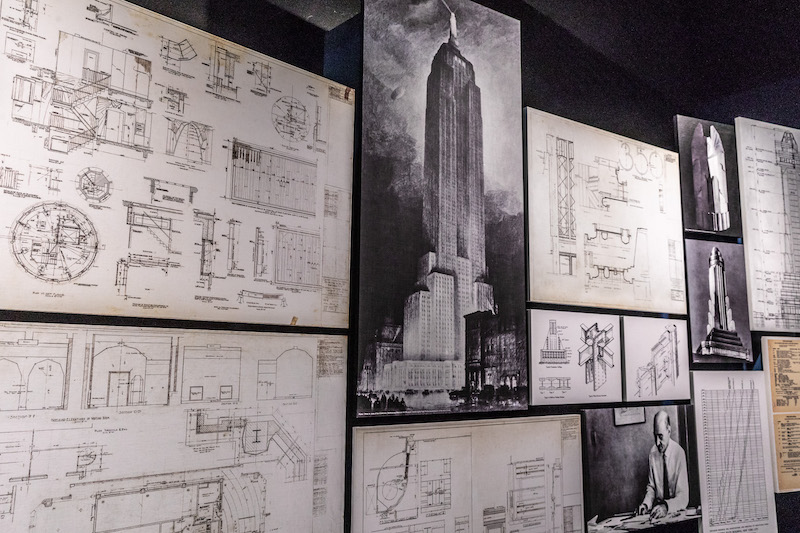 Copies of the building's blueprints
Copies of the building's blueprints
Before entering of the museum, visitors have access to a spacious area for ticket purchases and for viewing a series of interactive info-panels. On a landing between the first and second floors stands a 25-ft-tall replica of the Empire State Building, scaled for selfies.
The museum itself contains 10 gallery spaces, illuminated by 750 LED lights, and each gallery with its own controls, says Jonathan Hoyle, Associate Principal with The Lighting Practice, which provided the lighting design.
“What we were charged with was coming up with an icon within an icon,” says Michael Beneville, President of Beneville Studios, which acted as a consultant for the entirety of the second-floor redesign. He points out that while the signage in each gallery is in eight languages, “we wanted to tell stories without using words.”
One of the more striking galleries in the museum is “Construction,” which takes its cue from the photography of Lewis Hine of the skyscraper’s construction. Tenguerian Architectural Models created cast models of workers, girders, and other site-specific products. These are supplemented by digital media, created by the firm Squint/Opera, that re-enact with remarkable verisimilitude construction activities through video that combines archival and computer-generated images with actors playing construction workers.
Callum Cooper, Squint/Opera’s creative director, notes that while the video loops last only about a minute, the sound design is varied enough so that the images don’t seem redundant to the gallery’s viewers.
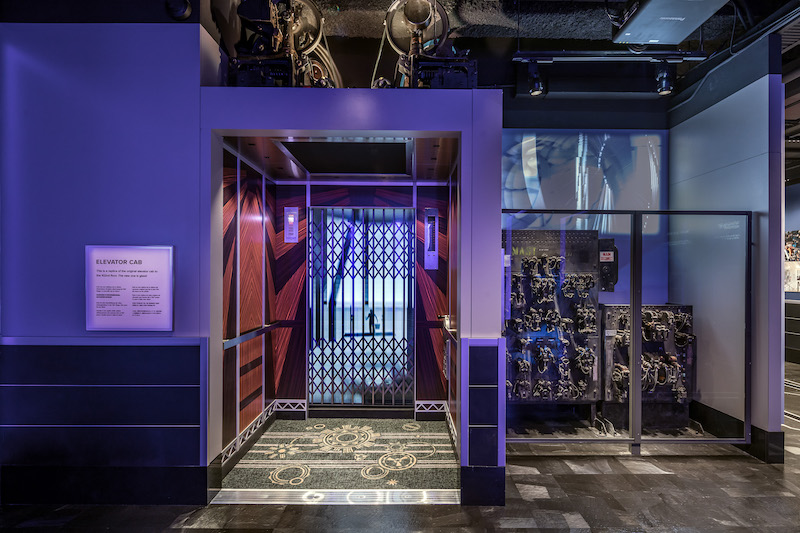
A recreation of the building's original elevator cab and control panel, installed by Otis Elevator in 1931.
Sergio Londono, PE, LEED AP BD+C, a Vice President with Thornton Tomasetti, the project’s structural engineer, says that the Construction gallery in particular, with cast-iron models that weigh tons, required reinforcing the second floor so that weight loads could be redistributed.
Thornton Tomasetti had 19 engineers on this project. And what impressed Londono was how well this 88-year-old tower, which was constructed in only 410 days, has held up over the decades. “We admired its systems; this is really good engineering,” he says.
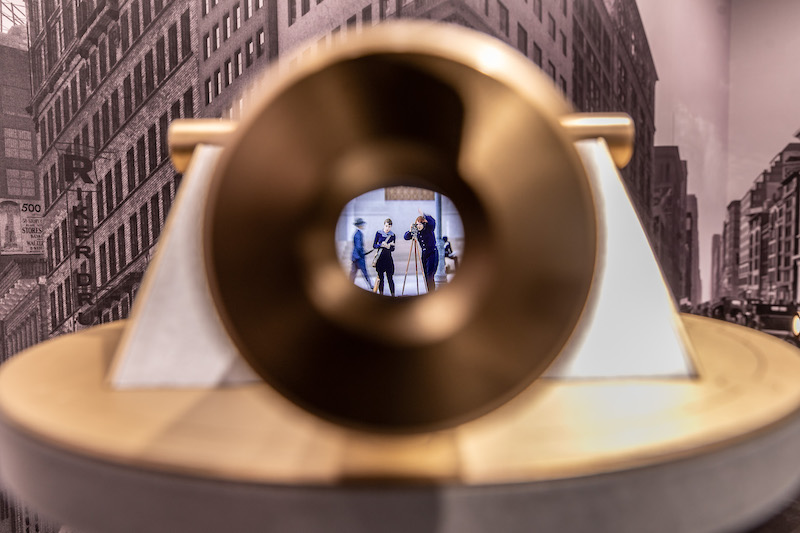
One of the galleries features survey markers that were used to position the surveyor's levels for the construction of the building.
Other galleries include:
• A recreation of the building’s original elevator cab and electrical control board that Otis Elevator installed in 1931. The 2.8-million-sf Empire State Building, with 16,000-plus workers, now has 68 elevators, all but three of which have been completely modernized, says Marc Zoelle, a Vice President with Otis.
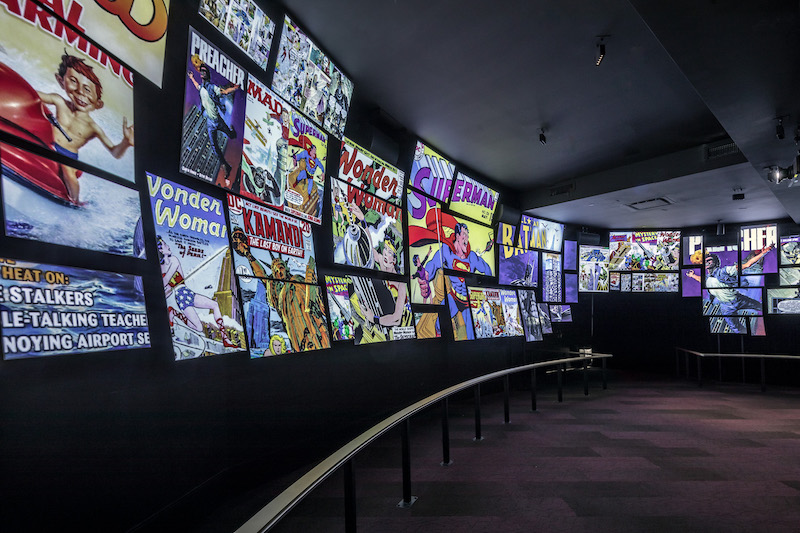
Panels show clips of how different media have used the Empire State Building over the decades.
• A room with 72 panels that show clips of the Empire State Building featured in movies, commercials, TV shows, video games, and so forth. The montage is enhanced by a commissioned eight-track score performed by a 60-piece orchestra.
• What museum about the Empire State Building would be complete without a reference to King Kong? Visitors can walk into an office setting from the 1930s that’s pierced by the famous ape’s fingers. Kong himself is seen peering menacingly through the office’s windows.
• Five interactive wall panels inform the museum’s visitors about the building’s greenness and wellness. A $500 million renovation initiated in 2007 has reduced the building’s energy consumption by 38% and is estimated to save the building $4.4 million in annual energy costs.
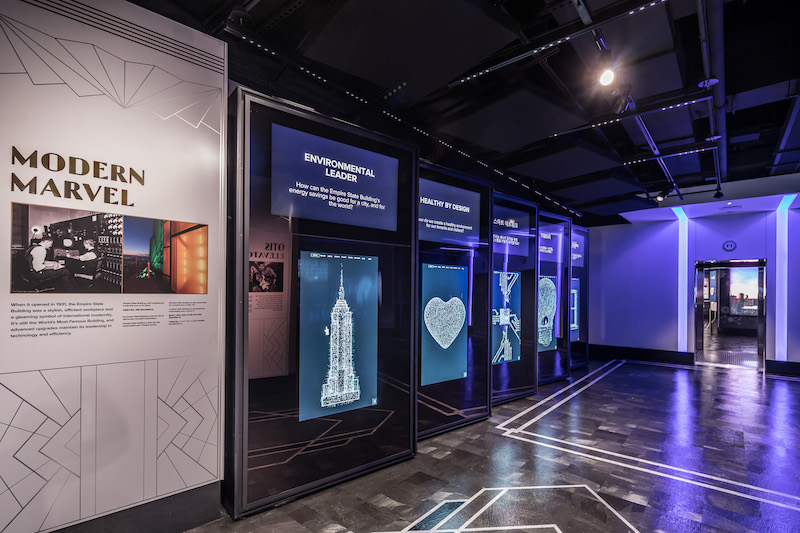 Displays call attention to what is one of the greenest buildings in the U.S.
Displays call attention to what is one of the greenest buildings in the U.S.
Once they’ve completed their tour of the museum, visitors can board the elevators to the Observatory. The thinking is that the museum will help disperse the crowds, and by doing so relieve their waiting time to get to the top of the building.
Other Renovation Team members include Skanska, which as the construction manager had 30 subs reporting to it. JLL was the project manager for Empire State Realty Trust, and oversaw four major consultants, the design and construction teams, and a dozen subs, says Robert Krizman, PE, JLL’s Senior Vice President and National Director-Project & Development Services. Corgan oversees architectural projects for the building’s redesign. Syska Hennessy provided MEP, IT, vertical transportation, and commissioning services. Kubik Maltbie fabricated the museum’s exhibits. Diversified was the hardware integration partner, and Intersection the technology integration partner.
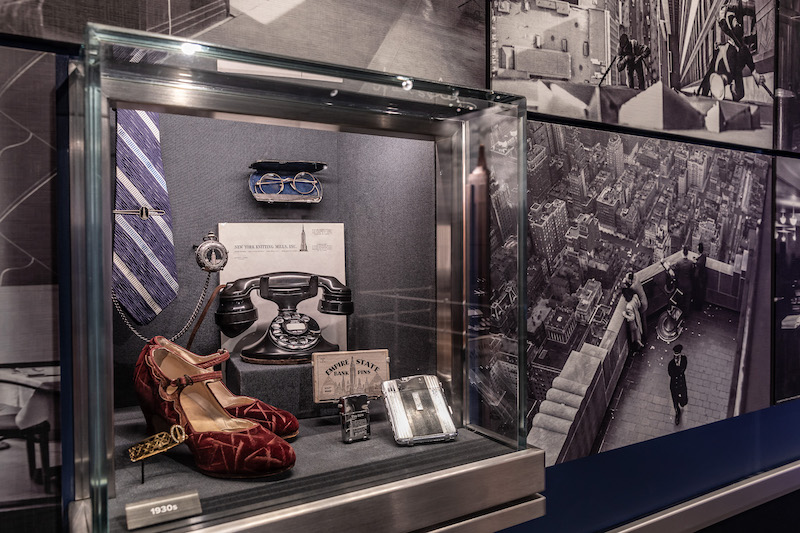 Memorabilia from the 1930s.
Memorabilia from the 1930s.
Related Stories
Office Buildings | Oct 19, 2023
Proportion of workforce based at home drops to lowest level since pandemic began
The proportion of the U.S. workforce working remotely has dropped considerably since the start of the Covid 19 pandemic, but office vacancy rates continue to rise. Fewer than 26% of households have someone who worked remotely at least one day a week, down sharply from 39% in early 2021, according to the latest Census Bureau Household Pulse Surveys.
Luxury Residential | Oct 18, 2023
One Chicago wins 2023 International Architecture Award
One Chicago, a two-tower luxury residential and mixed-use complex completed last year, has won the 2023 International Architecture Award. The project was led by JDL Development and designed in partnership between architecture firms Goettsch Partners and Hartshorne Plunkard Architecture.
Giants 400 | Oct 17, 2023
Top 130 Sports Facility Architecture Firms for 2023
Populous, Gensler, HOK, and HKS head BD+C's ranking of the nation's largest sports facility architecture and architecture/engineering (AE) firms for 2023, as reported in Building Design+Construction's 2023 Giants 400 Report.
Office Buildings | Oct 16, 2023
The impact of office-to-residential conversion on downtown areas
Gensler's Duanne Render looks at the incentives that could bring more office-to-residential conversions to life.
Giants 400 | Oct 11, 2023
Top 100 Industrial Sector Architecture Firms for 2023
Ware Malcomb, Arcadis, Stantec, and Gresham Smith top the ranking of the nation's largest industrial facility sector architecture and architecture/engineering (AE) firms for 2023, as reported in Building Design+Construction's 2023 Giants 400 Report.
Products and Materials | Oct 10, 2023
‘Works with WELL’ product licensing program launched by International WELL Building Institute
The International WELL Building Institute (IWBI) recently launched the Works with WELL product licensing program. Works with Well certification allows manufacturers to demonstrate that their products align with WELL strategies.
Mass Timber | Oct 10, 2023
New York City launches Mass Timber Studio to spur more wood construction
New York City Economic Development Corporation (NYCEDC) recently launched New York City Mass Timber Studio, “a technical assistance program to support active mass timber development projects in the early phases of project planning and design.”
Government Buildings | Oct 10, 2023
GSA names Elliot Doomes Public Buildings Service Commissioner
The U.S. General Services Administration (GSA) announced that the agency’s Public Buildings Service Commissioner Nina Albert will depart on Oct. 13 and that Elliot Doomes will succeed her.
Esports Arenas | Oct 10, 2023
Modular esports arena attracts more than gamers
As the esports market continues to grow to unprecedented numbers, more facilities are being developed by universities and real estate firms each year.
Higher Education | Oct 10, 2023
Tracking the carbon footprint of higher education campuses in the era of online learning
With more effective use of their facilities, streamlining of administration, and thoughtful adoption of high-quality online learning, colleges and universities can raise enrollment by at least 30%, reducing their carbon footprint per student by 11% and lowering their cost per student by 15% with the same level of instruction and better student support.


